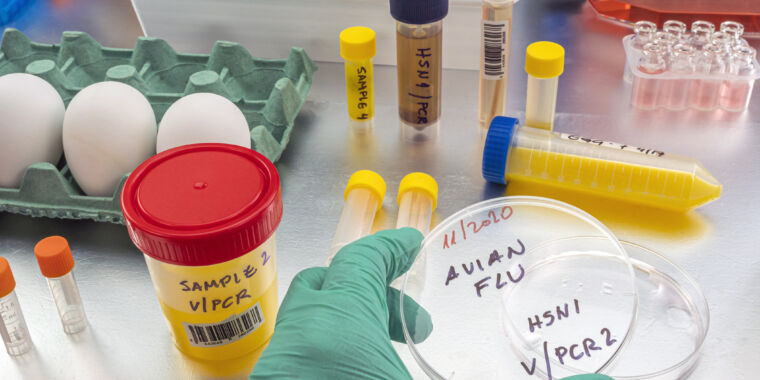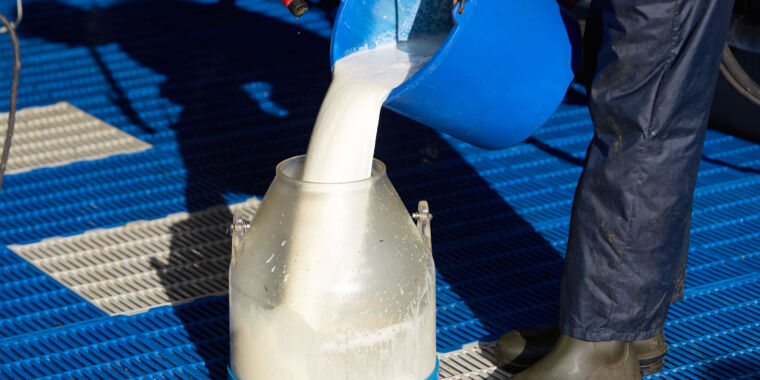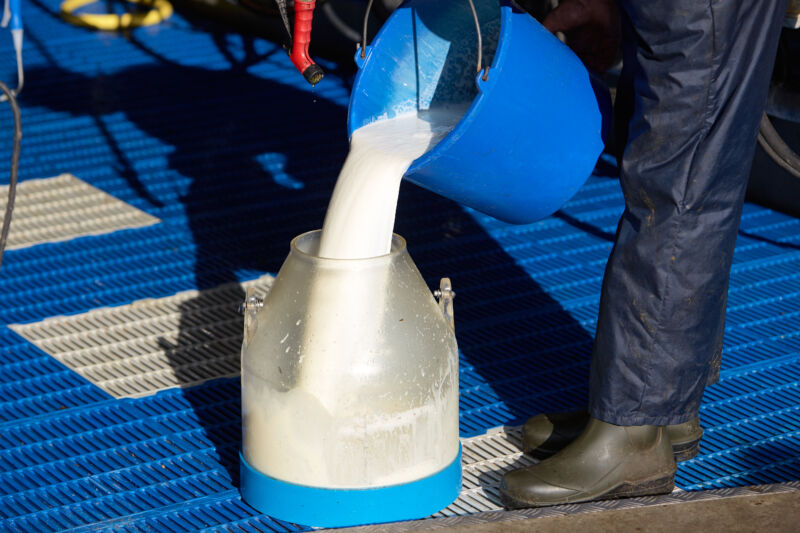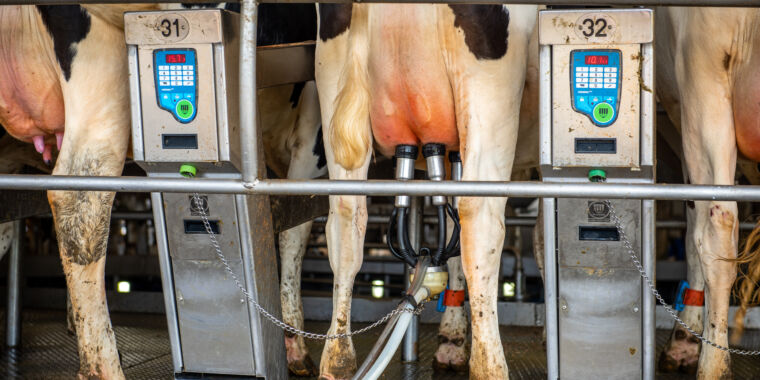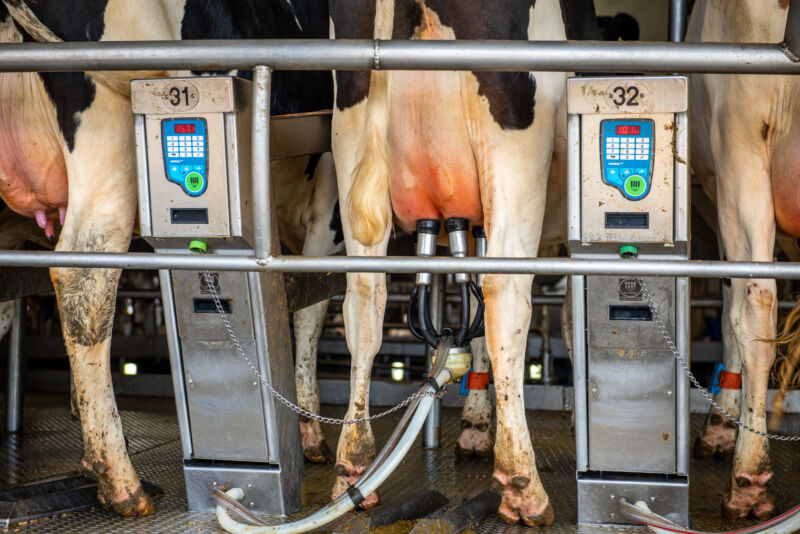As bird flu spreads in cows, US close to funding Moderna’s mRNA H5 vaccine
New jab —
If trials are successful, US government likely to buy doses for vaccine stockpile.
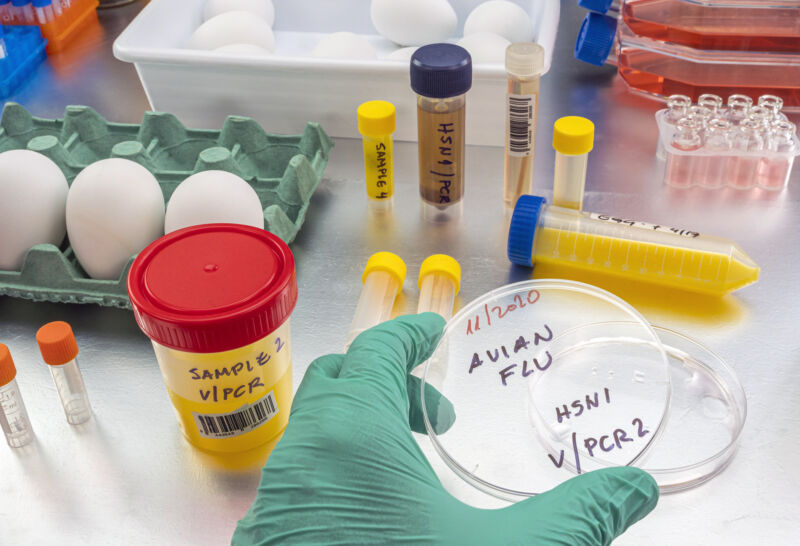
Digicom Photo/Science Photo Library via Getty
The US government is nearing an agreement to bankroll a late-stage trial of Moderna’s mRNA pandemic bird flu vaccine, hoping to bolster its pandemic jab stockpile as an H5N1 outbreak spreads through egg farms and among cattle herds.
The federal funding from the government’s Biomedical Advanced Research and Development Authority, known as BARDA, could come as early as next month, according to people close to the discussions.
It is expected to total several tens of millions of dollars and could be accompanied by a commitment to procure doses if the phase-three trials are successful, they said.
Talks between the government and Pfizer over supporting the development of its mRNA vaccine targeting the H5 family of viruses are also ongoing. Pfizer, like Moderna, played a pivotal role in supplying mRNA vaccines for Washington’s jab rollout during the COVID-19 pandemic.
Bird flu has been detected on poultry farms in 48 states and in dairy cow herds across nine states as part of one of the worst outbreaks in recent history, according to the US Centers for Disease Control and Prevention. The CDC has also reported two cases affecting dairy workers in recent months, adding to concerns of the virus spreading in human populations.
US health authorities continue to classify the public health risk from bird flu as low, but their efforts to build up and diversify the pandemic vaccine stockpile have gathered pace. Federal health officials said last week that the government was moving ahead with plans to fill 4.8 million vials from its existing portfolio of protein-based bird flu vaccines and was in discussions with Moderna and Pfizer.
The possibility of contributing to the US pandemic vaccine stockpile also represents a commercial opportunity for the mRNA vaccine makers, whose market valuations have fallen significantly from pandemic highs. Moderna’s share price is up nearly 37 percent since the start of April.
Moderna has completed dosing of a mid-stage trial of its H5 pandemic flu vaccine, with interim data expected soon. Pfizer said in a statement on Wednesday that it “would be prepared to deploy the company’s capabilities to develop a vaccine for strategic stockpiles,” confirming that it had launched a phase-one trial for a pandemic flu vaccine last December.
Applications for BARDA grant funding for an mRNA-based pandemic flu vaccine closed in December last year, according to a project proposal seen by the Financial Times. But the bird flu outbreak has increased the urgency of talks, with federal officials acknowledging that the speed with which mRNA vaccines were designed and deployed during the COVID-19 pandemic showed their value compared with more traditional vaccine technology.
The jabs from GSK, Sanofi, and CSL Seqirus, which make up the US government’s existing pandemic vaccine portfolio, provide immunity to the current strain of bird flu, according to laboratory testing, but rely on a more time-intensive manufacturing process using egg- and cell-based cultures.
The US health department, Moderna, and Pfizer declined to comment on the potential funding.
© 2024 The Financial Times Ltd. All rights reserved. Not to be redistributed, copied, or modified in any way.
As bird flu spreads in cows, US close to funding Moderna’s mRNA H5 vaccine Read More »
